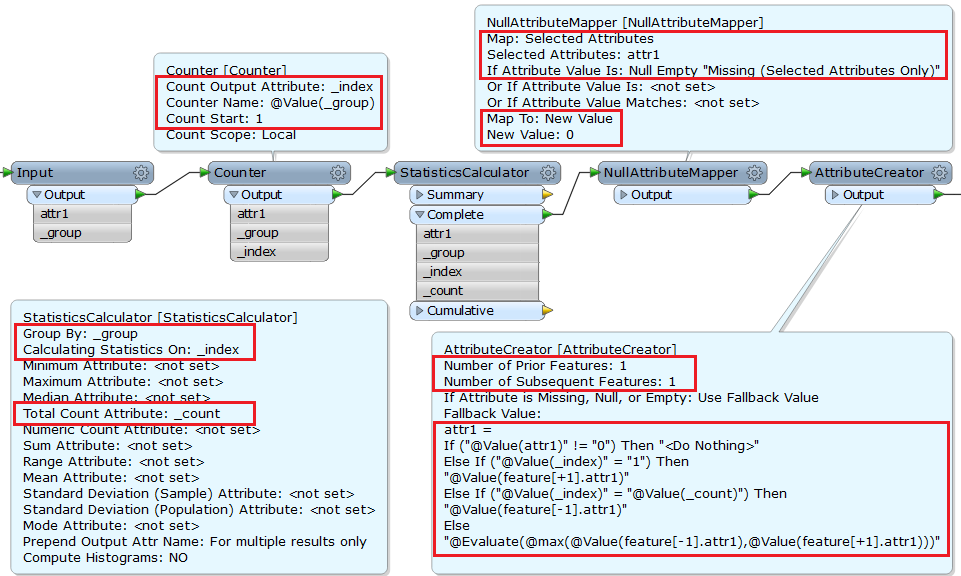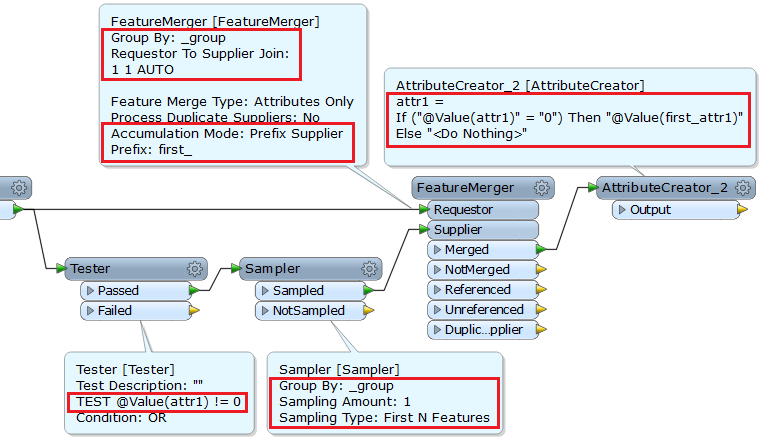Any idea .. Thanks
Any idea .. Thanks
Best answer by takashi
This data flow would be a solution.

The Counter adds 1-based sequential number to the lines for each group (_index).
The StatisticsCaluclator counts the number of lines in a group (_count).
The NullAttributeMapper replaces <null>, <empty>, <missing> "attr1" with 0.
The AttributeCreator replaces 0 "attr1" with:
- "attr1" of the subsequent line if the line is the first one in a group,
- "attr1" of the prior line if the line is the last one in a group,
- otherwise, the maximum "attr1" in prior and subsequent lines.
But it doesn't support the case like "0,0,0,1,2" (i.e. there are consecutive zeros in the first part). To resolve such a case, add this data flow.

The Tester and the Sampler selects the first feature having non-zero "attr1" for each group.
The FeatureMerger merges the first non-zero value to every feature as a new attribute named "first_attr1" for each group.
The AttributeCreator_2 replaces 0 "attr1" with the "first_sttr1" value.
Hope this helps.